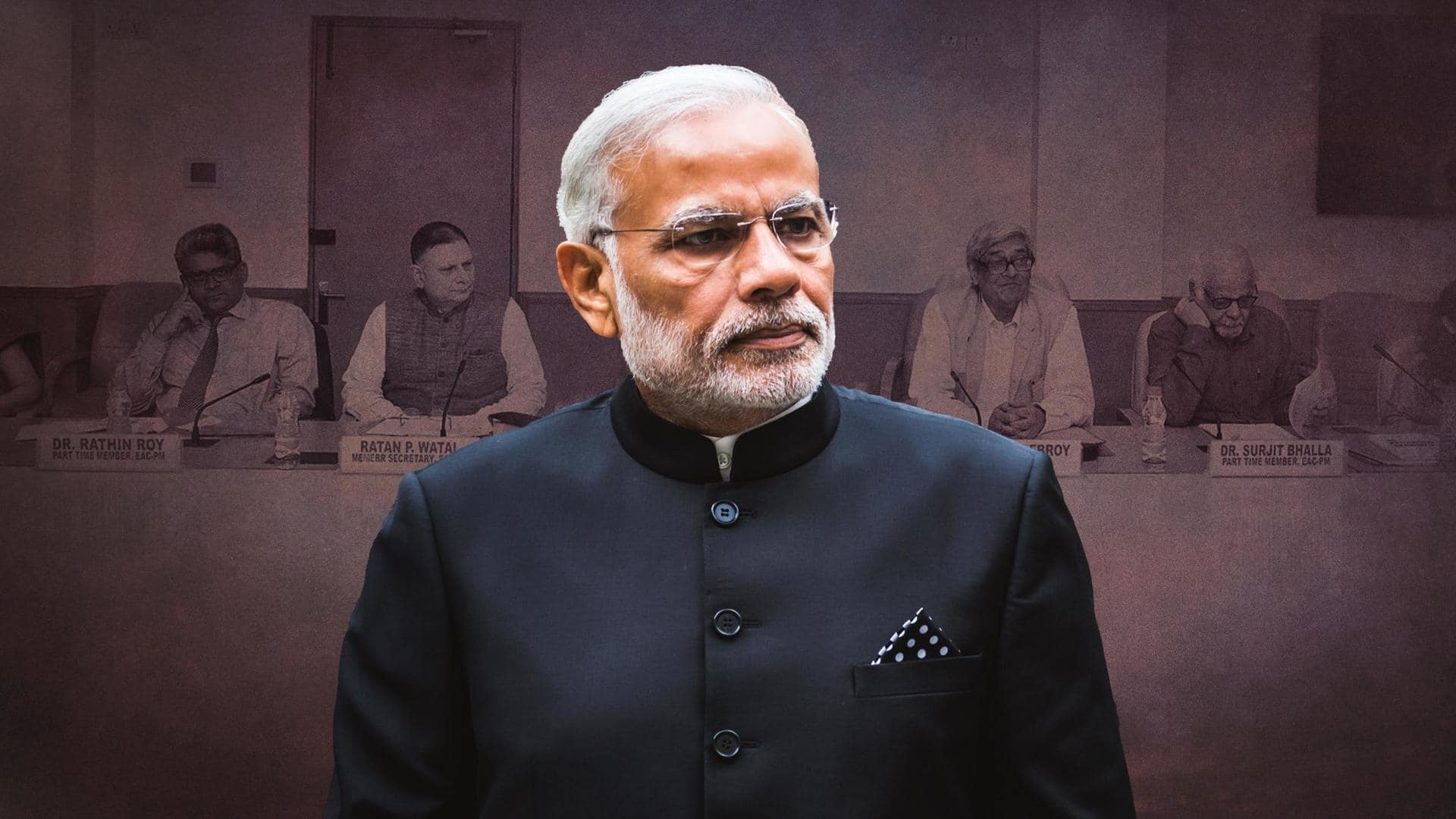
No communal bias in Modi government's policies: EAC-PM report
What's the story
There is no evidence of the Narendra Modi government catering to any specific community, claimed a study by the Economic Advisory Council to the Prime Minister (EAC-PM). The study by EAC-PM member and economist Shamika Ravi showed that in some cases, minority communities benefited more than the majority. The report's assessment was based on gains related to bank accounts, electricity, mobiles, and toilets.
Context
Why does this story matter?
For years, Prime Minister Modi and the Bharatiya Janata Party (BJP) have battled allegations of giving preferential treatment to the country's Hindu majority at the expense of the minority communities. As India is staring at the Lok Sabha elections scheduled for next year, the opposition has upped the ante by accusing the government of chipping away at the country's democratic institutions.
Report
Study looked at nationally representative sample of 12 lakh households
The report titled "A Secular Democracy in Practice: Objective Assessment of Amenities Programs in India" is based on a sample of over 12 lakh households from 2015-16 and 2019-21. Based on its findings, it recommended more focus on amenities like LPG and water on-premises to uplift the poorest 20% of the country's population. It also stated that no evidence of community-based discrimination was found.
Electricity
Access to electricity went up from 53% to 85%
The study showed that in 2015-16, 53% of the poorest 20% of the population had access to electricity, which increased to 85% in 2019-21. The most considerable improvement was seen among the poorest 20% of the Muslim community, with a target achievement of 71% as compared to the average target achievement of 60% across all social groups.
Bank accounts
Bank account holding increased from 74% to 93%
The study also showed that in 2015-16, 74% of the poorest 20% of households had bank accounts, which increased to 93% in 2019-21. The overall target achievement was 73%, while the Muslim community was the biggest gainer with a target achievement of 77%. The target achievement stood at 75% for Other Backward Classes (OBC) and 70% for Scheduled Castes (SC) and Scheduled Tribes (ST).
Mobile phones
Access to mobile phones jumped from 68% to 79%
In terms of access to mobile phones, 68% of the poorest 20% of households had at least one family member with a mobile phone in 2015-16, which climbed to 79% in 2019-21. The target achievement was 37% for Muslim religious clusters while for Hindus and Muslims combined clusters, it stood at 33%. Notably, the government doesn't have any amenity program related to mobile phones.
Toilets
Access to toilets increased from 12% to 48%
As for access to toilets, in 2015-16, only 12% of the poorest 20% of households had access, which increased to 48% in 2019-21, with a target achievement of 41%. The Muslim and Sikh communities emerged as the most significant beneficiaries, with a target achievement of over 50%. For SCs and STs, the number went up from 7% and 3% to 41% and 32% respectively.
Information
Use of LPG went up from 1% to 8%
Only 1% of the poorest 20% of households used LPG as cooking fuel in 2015-16, which went up to 8% in 2019-21, with a target achievement of 7%. Except for the Sikh community, the target achievement remained less than 10% for Christians, Hindus, and Muslims.
Information
Access to water saw marginal increase among communities
Lastly, in 2015-16, 63% of the poorest 20% of Muslim households had access to water on-premises, while it was 41% for Hindu households. In 2019-21, it increased by 5% and 11% respectively. The Sikh community was the biggest gainer with a target achievement of 32%.